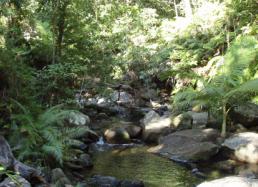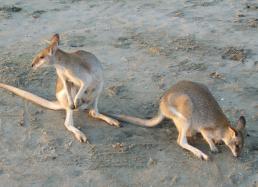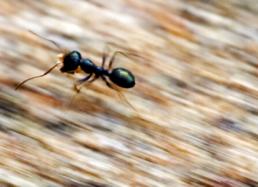Australian Rainforest Diversity & Climate Change
The Australian Wet Tropics are the largest surviving tract of the ancient rainforests that once covered Gondwana—the southern "supercontinent" that eventually broke up to become Australia, Antarctica, Africa, and South America (as well as Madagascar, India, and New Zealand). Many ancestors of the flowering plants and animal species that evolved on this supercontinent can still be found today in the rainforests that stretch along the coastline of Queensland.
Rainforest Range
Today, the Australian Wet Tropics extend from the Cape York Peninsula in the north to the Paluma Range in the south. But we know from previous research in evolutionary biology and geology that, in the past, these rainforests became divided at times due to climatic drying. During these drying events, rainforest animals and plants were forced to retreat to the remaining tropical patches in order to survive.
Climate Change & Diversity
The signature of these past dividing events can often be seen in the genetic diversity of the organisms that live in the Australian Wet Tropics today:
Vertebrate Diversity: We see the greatest diversity in vertebrate species—mammals, birds, reptiles, etc.—at high elevations, where these animals retreated during times of drought. Their genetic signature reveals that one vertebrate species typically diversified into several populations (subspecies) that occupied a variety of niches.
Invertebrate Diversity: Ants tell an opposing story. We see great diversity only along mountaintops, but also at lower elevations. In addition, each ecological niche contains a completely different species, not simply different populations within the same species.
In short, the genetic signature of ants tells us that invertebrates diversify on a different evolutionary level, likely because the "home range" for an ant colony is much smaller than most vertebrates. The fact that there are so many more species of ants than vertebrates may allow us to detect the effects of climate change at a finer scale.
Evolution & Conservation
Uncovering the evolutionary patterns of plants, vertebrates, and invertebrates—and learning how they interact with or differ from each other—not only helps us piece together the history of our world, but also helps us build a "big picture" of how climate change affects all life on Earth. With this information, we can develop conservation strategies that help protect the diversity of our planet.




